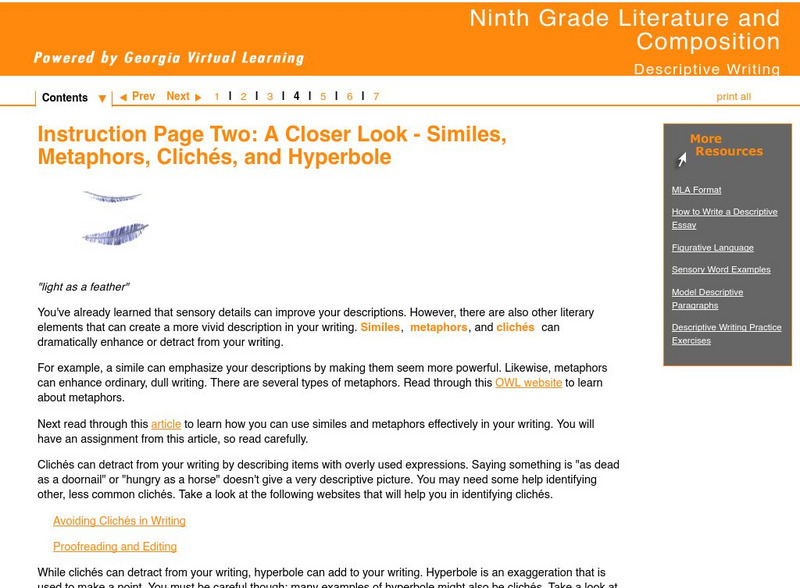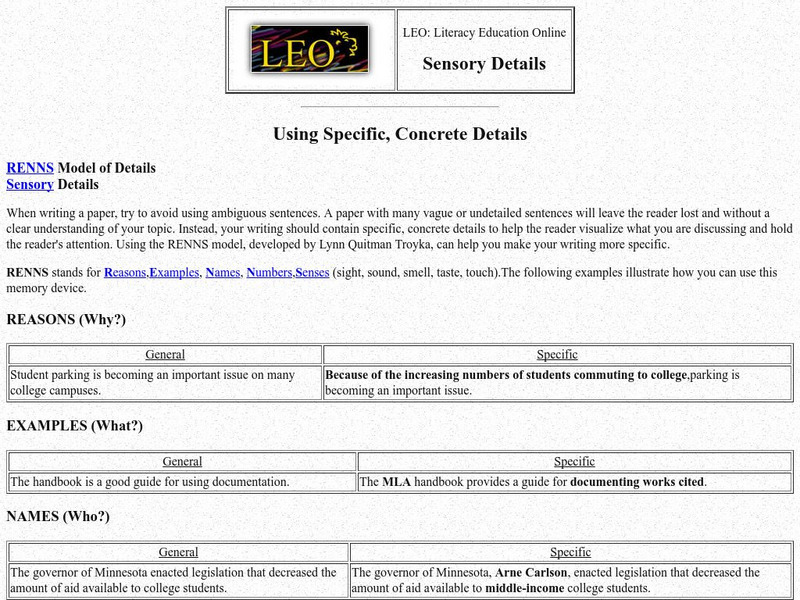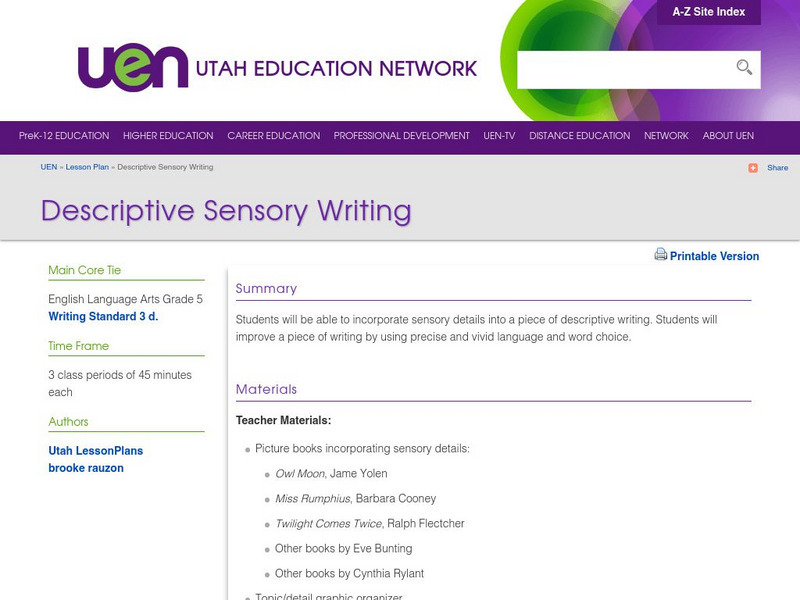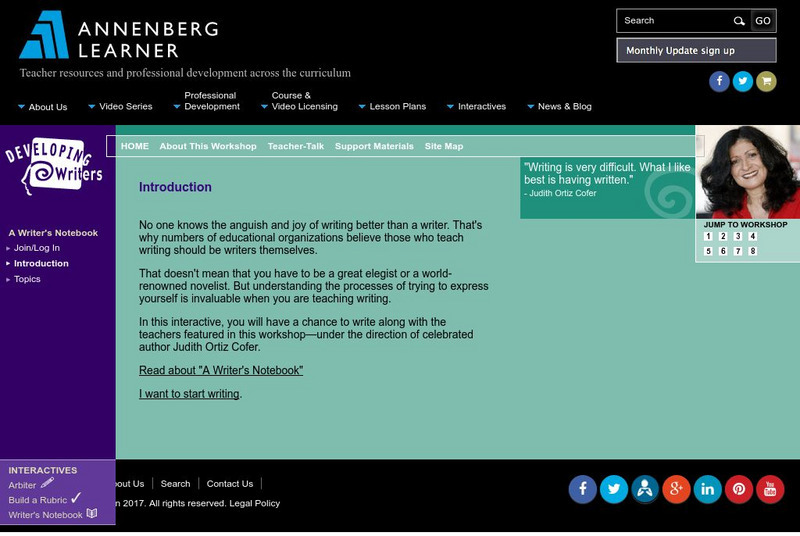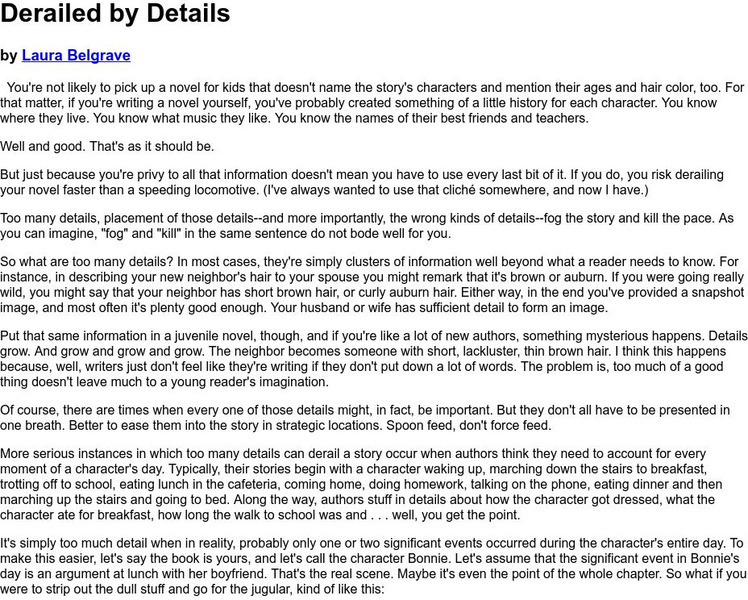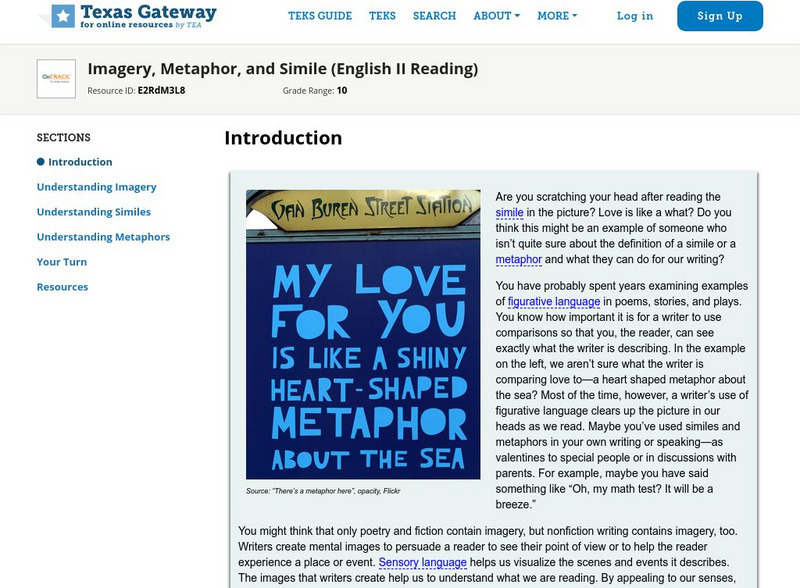Other
Study.com: How to Use Descriptive Details & Sensory Language in Your Writing
When you write a narrative, you can draw your reader into your experiences by adding specific, concrete details and sensory language to your storytelling. This lesson tells you exactly how to do it. W.9-10.3d Precise/sensory details,...
Better Lesson
Better Lesson: Developing Characters and Experiences With Sensory Language
Adding sensory languages makes your writing so good you can see, hear, smell, taste and touch it. This lesson will show you how to use descriptive sensory language in order to develop and capture the experiences and characters in a...
Georgia Department of Education
Ga Virtual Learning: Descriptive Writing: Similes, Metaphors, Cliches, Hyperbole
This lesson focuses on figurative language used in descriptive writing including similes, metaphors, cliches, hyperbole. It offers multiple links to websites pertaining to figurative language in descriptive and creative writing; an...
Utah Education Network
Uen: Third Grade Writing Lesson #1/ Descriptive Prompt
Given a descriptive writing prompt, 3rd graders will include precise word choices and sensory language in a piece of writing about their favorite place.
Alabama Learning Exchange
Alex: Marshmallow and Pretzel Sensory Writing
This language arts lesson applies hands-on materials to help middle schoolers apply the sensory details need for writing. It also incorporates writing skills for comparing and contrasting. In addition, students will utilize Thinkfinity...
Writing Fix
Writing Fix: Colorful Sensory Poems
This lesson allows students to explore color - both in literal and figurative terms. Students will read books about color, discuss the emotion involved with color, and incorporate color metaphors to write poems using the graphic...
CPALMS
Cpalms: Reading With Our Eyes, Fingers, Toes, Ears and Nose
[Free Registration/Login Required] In this lesson, learners are learning to identify sensory words in their reading, specifically in poetry. Students will gain a perspective on how authors use sensory words to portray their ideas. They...
The Write Place
Literacy Education Online: Sensory Details
This site provides several sample sentences which show sensory details and aid students in writing specific rather than general sentences. It is a good site for someone preparing to write a descriptive essay. W.9-10.3d Precise/sensory...
Utah Education Network
Uen: Descriptive Sensory Writing
In this lesson, 5th graders will engage in descriptive writing. Students will improve a piece of writing by using precise word choices that are full of sensory word choices.
Writing Fix
Writing Fix: The Sum of Its Parts
Inspired by Julianna's understanding (from the novel Flipped by Wendelin Van Draanen) that "A painting is more than the sum of its parts," students will describe a memorable place that evokes a certain feeling or emotion. Students will...
Annenberg Foundation
Annenberg Learner: A Writers' Notebook
Virtually participate in a workshop of four high school teachers led by a renowned author. There are eight topics including "Hiding and Revealing with Language," "Using Sensory Description," and "Writing a Picture of Me".
Harold D. Underdown
Derailed by Details
A helpful site for writers which gives the proper perspective in assessing the detail involved in your writing. Provides examples of how to include exciting, relevant details when writing fiction.
Other
Lcc: Comparison and Contrast: Culture Capsules
This resource provides links to eight comparison and contrast essays written by English as a Second Language (ESL) students. Each essay involves comparing and contrasting two different cultures or specific aspects in those cultures.
Texas Education Agency
Texas Gateway: Literary Text: Imagery, Metaphor, and Simile
Writers use sensory imagery ("smelled the salty air"), similes ("like a strong man playing tug-of-war"), and metaphors ("the waves roaring in my ears") to capture the reader's imagination. In this lesson, you will learn how to identify...
Sophia Learning
Sophia: Descriptive Papers: Key Elements: Lesson 2
This lesson goes over words, phrases, and key elements that are included in descriptive papers. It is 2 of 2 in the series titled "Descriptive Papers: Key Elements."


